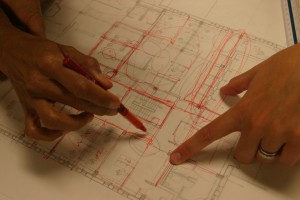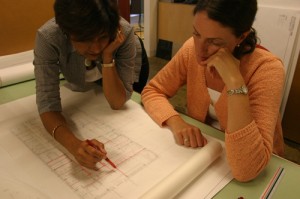A rousing start to the election season was generated by contributions and pledges to the VSAIA political action committee campaign by long-time supporter Gauthier Alvarado & Associates in Falls Church and relative PAC newcomer HDR in Alexandria.
Rob Morris, III, AIA, PE, presented his firm’s traditional $1,000 check to the PAC in December. Jim Draheim, AIA, announced his firm’s pledge of $2,000 in March. Both have combined their firms’ support with personal efforts to increase the level of participation in the PAC. They are sending letters to their peers in several firms encouraging them to join in supporting the PAC and asking that they also encourage their employees to do the same.
Ed Gillikin, AIA, VSAIA vice president for government advocacy, and the members of the government and industry affairs committee ask that individuals contribute the equivalent of one hour’s billable time to the PAC. They request that firms contribute a like amount.
With all 140 seats in the Virginia General Assembly open this year, the campaign goal will be to top the PAC’s previous best year of $23,630 contributed in 2006.
The PAC supports the campaigns of those candidates who have shown an understanding of what the profession does and of how architects affect the quality of life within their communities. If a candidate is running for the first time, the VSAIA considers its members’ evaluations. For incumbents, the VSAIA concentrates its support on those who serve in leadership positions and those who serve on the General Laws committees in the House and Senate. This committee reviews nearly 90 percent of the bills affecting the profession.
A candidate’s party affiliation is not considered. Historically, the VSAIA PAC’s contributions run just about 50-50 on supporting Democrats and Republicans. Information on past activity can be obtained from the Virginia Public Access Project website http://www.vpap.org/committees/profile/home/600. VAPA’s home site is www.VPAP.org.
It takes time to build rapport and trust between the architects and elected officials. This is done through individual meetings among the VSAIA legislative counsel, staff and members, and the legislators. Those in office depend on us for information about the possible impact of a bill. We depend on them to weigh that information with other sources and to reach a reasonable conclusion when the votes are taken.
To maintain the investment in these relationships, the VSAIA needs to support those candidates who supported restricting unlicensed practice, who supported limiting by contract an architect’s liability, and who support the concept of qualifications-based selection for public projects.
In supporting the PAC, you are supporting your firm and your ability to practice your profession. Please contribute to the PAC today by sending a check equal to one-hour’s billable time to the VSAIA PAC, 2501 Monument Avenue, Richmond, VA 23220.
 A growing body of research discussing the substantial economic and environmental benefits of energy efficiency has led U.S. policymakers, investors, building owners, environmental groups, and design and construction professionals to seek ways to scale up the energy efficiency retrofit market. As the energy-efficiency retrofit market develops, architects are in a position to seize a robust business opportunity by offering a new line of service — deep energy retrofits. These are retrofits that aim to deliver greater energy savings by taking a whole-building approach to energy efficiency.
A growing body of research discussing the substantial economic and environmental benefits of energy efficiency has led U.S. policymakers, investors, building owners, environmental groups, and design and construction professionals to seek ways to scale up the energy efficiency retrofit market. As the energy-efficiency retrofit market develops, architects are in a position to seize a robust business opportunity by offering a new line of service — deep energy retrofits. These are retrofits that aim to deliver greater energy savings by taking a whole-building approach to energy efficiency.

